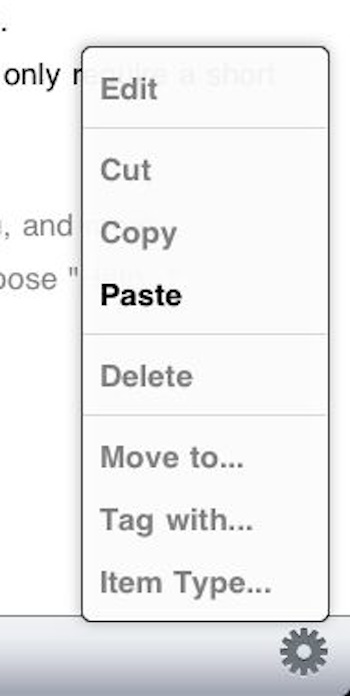

Print handouts Review meeting notes file format is fairly simple:įiles are expected to use the UTF-8 encoding and use a newline ( \n) to separate lines.Įach line makes a new item: project, task, or note.Ī task is a line that begins with a hyphen ( -) followed by a space, which can optionally be prefixed (i.e. Items can be indented (using literal tabs) under other items to create outline structure, which defines parent-child hierarchical relationship: Project meeting: Select and invite participants Prepare and distribute meeting agenda

TaskPaper format knows about four things: projects, tasks, notes, and tags. The format itself is exceptionally readable and supports different item types, outline hierarchy, and tagging. The format was invented by Jesse Grosjean and named after his TaskPaper macOS app, which is a system for organizing your outlines and tasks in a text file. You can now define which app to use for each note, no longer having to rely on the default app.įixed a small bug that made it necessary to toggle twice in order to open a new note.TaskPaper mode is an Emacs major mode for working with files in TaskPaper format. This is far from perfect so if you find any bugs or would like to request a feature, please do so on the GitHub page I’ve setup. I’ve got a few more things planned for this and other extensions. The added benefit is of course that you can have extensive notes without cluttering your task list. Used in conjunction with my previous extension you could, without leaving your task list, toggle the timer on and open the project file you need to work on. With this simple list you can easily see how quickly you can get things done. You’re a Web Developer with a task list similar to (forgive me if it’s silly but hey, I’m no WebDev) : Not to sure how this could benefit you or why you may need extra notes? Let me give you a scenario I stated in an earlier post.


Tip number 1 and most important of all, assign a global shortcut key to this!.If a document with the specified name doesn’t exist it will be created (Text file types only so far…) Tips and Use Cases If you prefer more tags/document types then just expand on this. Finally we have the app with which you want to open the note (must be apps exact name, correct caps and all) So in the above example, item 2 is a list of the path where you place docs related to your Note tag and the extension of your Note tag (some may prefer txt, md, mmd etc.). Item 2 onwards is a list of records pertaining to each tag.The variable is a list in the manner of: set workList to Set your preferred keyword and then setup your tags and paths.
Taskpaper default tagss install#
Download the Extension and install it the same way you install all others.You need Alfred’s PowerPack for this to work so if you don’t yet have it.The value of said tag would be the file name. An outline file in opml format, a text file, a scrivener file etc. Have a tag that defines a certain type of file. That is where Extended Notes comes into play. Now while TaskPaper’s notes are great, there are times when I feel I need more. Another recent addition to my workflow has been TaskPaper, so it would only make sense I integrate the two as much as possible. One thing that does however remain a constant in almost all my workflows is Alfred. I will forever tinker with my workflow, especially when finding new and exciting ways of improving it. Alfred Extension | TaskPaper Extended Notes


 0 kommentar(er)
0 kommentar(er)
